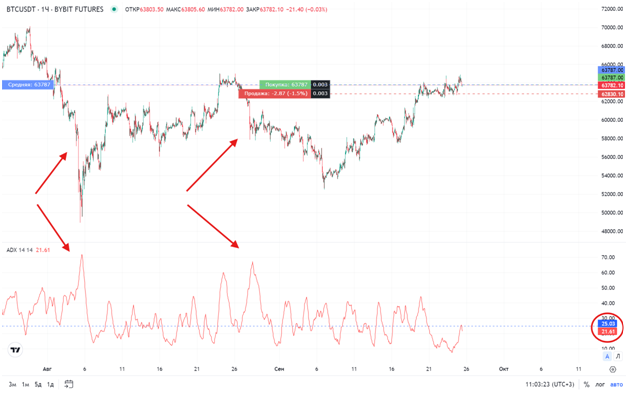The Average Directional Movement Index (ADX) is a tool designed to determine the presence of a trend. It assesses the intensity of price movement and the strength of market participants.
How does the indicator work?
ADX is calculated based on two other indicators called +DI (Positive Directional Index) and -DI (Negative Directional Index), which help identify the direction and strength of price movement. The calculations are based on historical price data.
The price indicator measures price volatility and analyzes the highest value among three parameters: the difference between the current high and low, the difference between the previous close and the current high, and the difference between the previous close and the current low.
How to use it in trading?
ADX has a range of values from 0 to 100, indicating the strength and presence of a trend in the market. A high ADX value (typically above 25) indicates a strong trend, while a low ADX value (usually below 20) suggests the absence of a clear trend or a sideways movement.
When the ADX line on the indicator chart moves upward, it means the trend is gaining strength and is likely to continue in the same direction. Therefore, a rising ADX line indicates a strengthening trend. Conversely, when the ADX line moves downward, it may indicate a loss of buying power or a potential trend reversal.
The ADX line goes up – the trend strengthens, goes down – the trend weakens.

The peak values of the ADX line show the moments when the trend is strongest.
Note
ADX belongs to the category of lagging indicators, so it may take time for the ADX line to start giving a steady signal to action after the onset of sudden volatility. Therefore, it is recommended to use ADX in combination with other indicators.
For more accurate analysis, adjust the indicator to higher timeframes.
Click on the “Pencil” button to set the values you need for the indicator.
If no value is specified for the ADX indicator in the bot settings then it works as “ADX > 25” for the selected timeframe.






